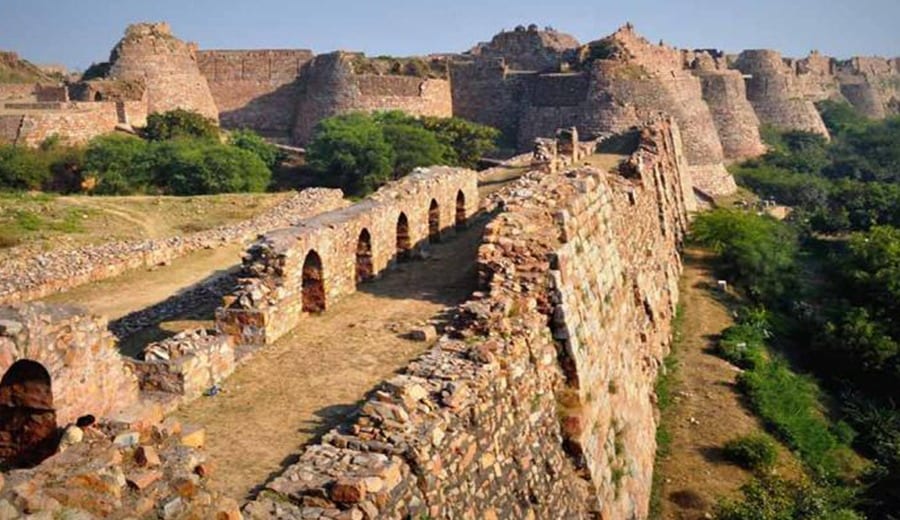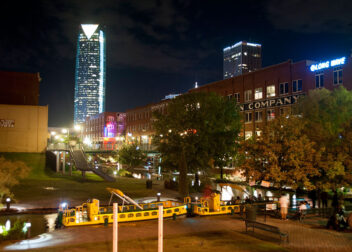Tughlaqabad fort
Tughlaqabad Fort is a ruined fort in Delhi, India, built by Ghiyas-ud-din Tughlaq, the founder of the Tughlaq dynasty, in 1321. The fort was abandoned soon after its construction and is now in a state of ruins. Despite its ruined state, the fort is a popular tourist destination in Delhi and offers a glimpse into the city’s rich history.
History
Tughlaqabad Fort was built by Ghiyas-ud-din Tughlaq in the 14th century to serve as the third capital of the Tughlaq dynasty in India. The fort was built in a strategic location on a hill overlooking the city of Delhi and was intended to serve as a symbol of the Tughlaq dynasty’s power and authority.
However, the fort was abandoned soon after its construction, due to lack of water and other logistical difficulties. Over time, the fort fell into disrepair and was eventually forgotten. In the 20th century, the fort was rediscovered and has since become a popular tourist destination in Delhi, attracting visitors from all over the world who are interested in the city’s rich history.
Despite its ruined state, the fort still offers a glimpse into the grandeur of the Tughlaq dynasty, and serves as a reminder of the city’s rich history and cultural heritage.
Tughlaqabad fort Facts
Here are some key facts about Tughlaqabad Fort:
- Location: Fort is located in Tughlaqabad, Delhi, India.
- Construction: The fort was built by Ghiyas-ud-din Tughlaq, the founder of the Tughlaq dynasty, in 1321.
- Purpose: The fort was intended to serve as the third capital of the Tughlaq dynasty and as a symbol of the dynasty’s power and authority.
- Abandonment: The fort was abandoned soon after its construction, due to lack of water and other logistical difficulties.
- Rediscovery: The fort was rediscovered in the 20th century and has since become a popular tourist destination.
- Architectural features: The fort features massive walls, towers, and gates, and is a good example of early medieval military architecture in India.
- Historical significance: Tughlaqabad Fort is a valuable historical site that offers a glimpse into the rich history of Delhi and the Tughlaq dynasty, and is an important part of India’s cultural heritage.
Architecture
The Fort is a well-preserved example of early medieval military architecture in India. The fort was designed to be a highly defensible fortress, with massive walls, towers, and gates that would have made it difficult for enemies to penetrate.
Some of the key architectural features of the fort include:
- Walls: The walls of the fort are made of large stone blocks and are up to 30 meters high in some places. They were designed to provide a strong defense against invading forces.
- Towers: The fort has several towers, including corner towers and entrance towers, which would have served as lookouts and as a means of defense.
- Gates: The fort has several gates, including a main entrance gate and a postern gate, which would have controlled access to the fort.
- Inner citadel: The inner citadel of the fort was where the Tughlaq dynasty’s palace was located. It was surrounded by high walls and was the most heavily defendedable part of the fort.
Overall, the architecture of The Fort is a good example of early medieval military architecture in India and provides valuable insights into the design and construction of forts during this time period.
How to reach Tughlaqabad fort
Tughlaqabad Fort is located in Tughlaqabad, Delhi, India. Here are some ways to reach the fort:
- By Road: Fort is well connected by road and can be easily reached by taxi or private vehicle.
- By Metro: The nearest metro station to Tughlaqabad Fort is Tughlaqabad, which is located on the Violet Line of the Delhi Metro. From the station, it’s a short drive or a 20-minute walk to the fort.
- By Bus: Delhi has a well-developed bus network and buses are readily available from different parts of the city to Tughlaqabad Fort.
- By Auto-Rickshaw: Auto-rickshaws are also a convenient way to reach Tughlaqabad Fort from different parts of Delhi.
No matter which mode of transport you choose, it’s advisable to plan your trip in advance and carry a map or GPS device to ensure a smooth journey to the fort.
Best time to visit
The best time to visit Tughlaqabad Fort is from October to March, during the winter months in Delhi. During this time, the weather is pleasant, making it easy to explore the fort and the surrounding area.
The summer months in Delhi can be extremely hot, with temperatures often reaching above 40°C, which can make it difficult to visit the fort. The monsoon season, which lasts from July to September, can also be challenging, with heavy rainfall and high humidity.
However, visiting The Fort during the winter months is ideal as the weather is cool and pleasant, allowing visitors to explore the fort and its surroundings comfortably. Additionally, the fort is well lit during the day, making it easier to see the architectural features and enjoy the views.
Nearby attractions
Tughlaqabad Fort is located in Tughlaqabad, Delhi, India, and there are several nearby attractions that visitors can explore in the area. Some of the popular nearby attractions include:
- Qutub Minar: This is a UNESCO World Heritage Site and is located just a few kilometers from Tughlaqabad Fort. It’s a 72.5-meter-tall tower made of red sandstone and is an excellent example of early medieval Indian architecture.
- Lotus Temple: This is a unique and modern temple shaped like a lotus flower, located in nearby South Delhi. It’s a popular tourist attraction and is considered one of the most beautiful temples in the world.
- Humayun’s Tomb: This is a tomb complex built in the 16th century, located in the Nizamuddin area of Delhi. It’s considered one of the first examples of Mughal architecture in India and is a UNESCO World Heritage Site.
- Red Fort: This is a 17th-century fort located in Old Delhi, and is considered one of the most important historical sites in the city. The fort is famous for its impressive architecture and is a must-visit for anyone interested in Delhi’s history.
- Akshardham Temple: This is a modern Hindu temple located in East Delhi, and is known for its intricate architecture and beautiful gardens. It’s a popular tourist attraction and a great place to learn more about Hindu culture and religion.
These are just a few of the many attractions located near The Fort, and visitors can choose to explore any or all of these sites depending on their interests and schedule.
Akshardham Temple FAQ
Here are some frequently asked questions about Tughlaqabad Fort:
- What is Tughlaqabad Fort? Tughlaqabad Fort is a medieval fort located in Tughlaqabad, Delhi, India. It was built in the 14th century by the Tughlaq dynasty and is an excellent example of early medieval military architecture.
- Who built Tughlaqabad Fort? The Fort was built by Ghiyas-ud-din Tughlaq, the founder of the Tughlaq dynasty, in the 14th century.
- Why was Tughlaqabad Fort built? Built as a fortress to protect the city of Delhi from invading forces and as the capital of the Tughlaq dynasty.
- What is the significance of Tughlaqabad Fort? Tughlaqabad Fort is an important historical site that provides valuable insights into the design and construction of forts during the early medieval period in India. It is also an excellent example of early medieval military architecture.
- What is the best time to visit Tughlaqabad Fort? The best time to visit Tughlaqabad Fort is from October to March, during the winter months in Delhi when the weather is cool and pleasant.
- What are some nearby attractions to Tughlaqabad Fort? Some nearby attractions to Tughlaqabad Fort include Qutub Minar, Lotus Temple, Humayun’s Tomb, Red Fort, and Akshardham Temple.



